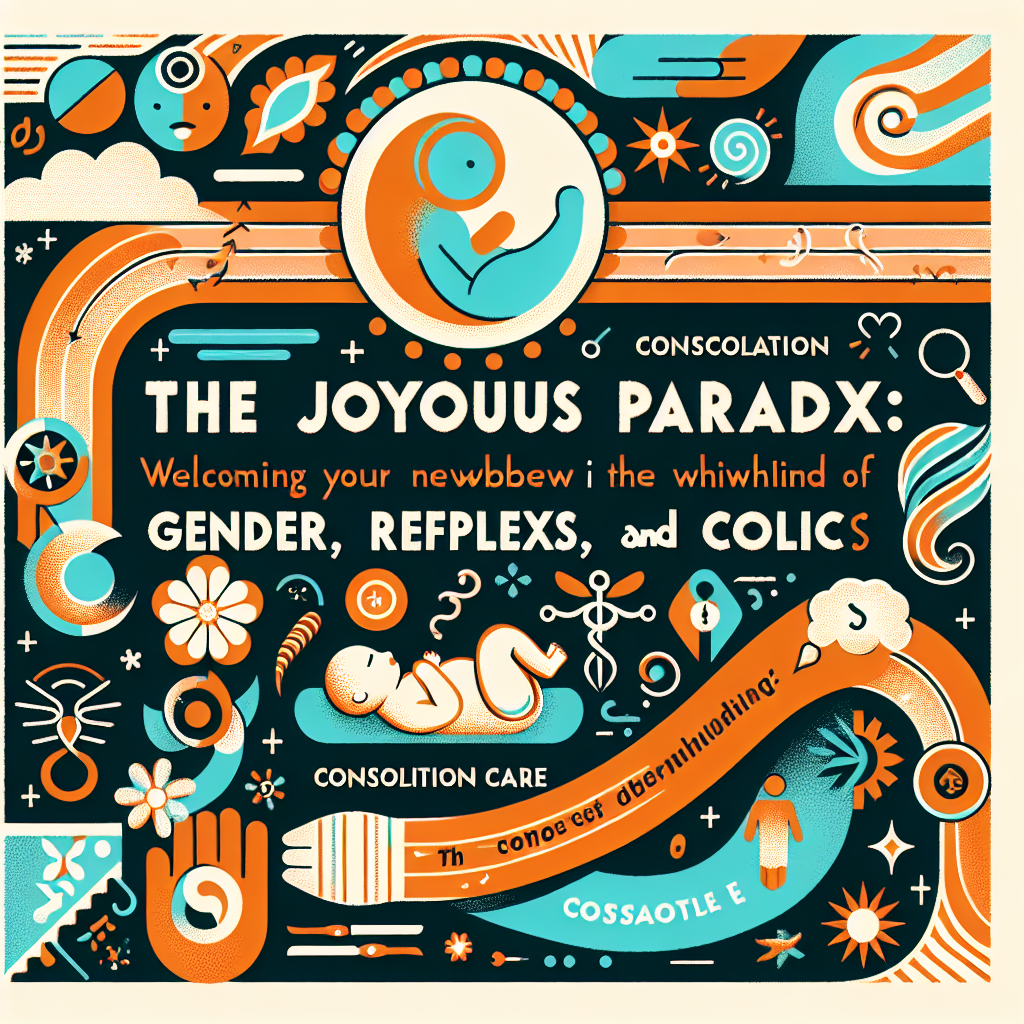Early literacy is more than just reading books; it encompasses a broad spectrum of experiences that start from birth. It lays the groundwork for communication, reading, writing, and ultimately, a child's cognitive, social, and emotional development. As a new parent, fostering early literacy might feel overwhelming, but simplifying its core components makes it manageable and rewarding.
Babies are exceptional learners, absorbing their surroundings from birth. Every sound, sight, and texture contributes to their budding understanding of language and communication. Through playful interactions like singing their favorite nursery rhyme or observing their fascination with vibrant colors, you plant the seeds of literacy.
You are more than just a caregiver for your child's physical needs; you are their first teacher. Engaging your baby with talking, singing, and even playful faces builds their language skills and fosters a love for stories. A warm, supportive environment brimming with words and music makes babies feel secure, while stimulating their desire to learn.
Shared moments matter most in nurturing early literacy. Reading to your baby strengthens your bond and helps them make sense of the world. Even if they don't yet understand the words, your voice provides comfort and aids in forming essential neural connections. Simple routines like bedtime stories or nursery rhymes become delightful opportunities to support your baby's development effortlessly.
Each coo, babble, and gurgle marks a step towards language formation. Embrace the laughter, the curious glances at picture books, and the tender moments you spend reading together. These experiences shape the narrative of your child's early literacy journey and fortify the bond between you, making early literacy a joyful exploration filled with love, learning, and discovery.
Creating a cozy space for storytelling enriches the experience of early literacy. A dedicated reading nook transforms everyday moments into extraordinary connections with your baby. Consider comfortable seating, whether a plush rocking chair or a pillow-lined corner, creating a haven of calm and interest in books.
- Cushioned Comfort: Choose soft, supportive cushions for comfortable storytime sessions. A comfy chair encourages a secure and affectionate environment.
Select age-appropriate books that inspire your baby's imagination. Books with bright illustrations, simple text, and textures are ideal for infants, introducing the joys of reading and stimulating sensory development.
- Age-appropriate Selections: Opt for sturdy books with cardboard or fabric pages, easy for small hands to explore. High-contrast images attract developing eyes, making them an excellent choice for early months.
Organizing books accessibly invites your baby to explore at will, fostering a natural habit of turning to books for joy and comfort.
- Effortless Organization: Display book covers facing forward to catch your baby's attention. Rotating books regularly can keep the selection fresh and enticing.
Appreciate these quiet reading moments together, reinforcing love and trust. The shared coos and giggles in your reading nook create cherished memories, underscoring early literacy's beautiful journey.
Explore the fascinating blend of visual and tactile elements in board books, high-contrast books, and texture-rich formats. Sturdy pages withstand enthusiastic exploration, allowing babies to immerse in reading joyfully. High-contrast books are captivating for newborns, providing a visual feast that can focus their attention, laying foundational blocks of focus.
- Board Books: Ideal for little hands, these books pair simple storytelling with vibrant imagery.
- High-Contrast Books: Their bold visuals appeal to infants’ eyes, capturing attention and fostering early visual engagement.
- Texture-Rich Formats: Books with varied textures encourage sensory exploration, enhancing language development.
Appropriate children's literature titles like 'Goodnight Moon' or 'The Very Hungry Caterpillar' introduce rhythmic language patterns and engaging stories, becoming delightful staples in a child's library. Also, 'Pat the Bunny' offers interactivity, anchoring a child's fascination with books.
- Joyful Classics: Engaging titles like 'Where's Spot?' infuse storytime with curiosity and discovery.
- Interactive Favorites: Books with flaps and textures, like 'Peek-a-Who?', transform reading into playful learning.
The stories you choose should entertain and reflect the diverse richness of the world. Introducing your child to diverse books opens doors to understanding and empathy, broadening perspectives.
- Cultural Richness: Selecting books that celebrate heritage nurtures appreciation and curiosity about the world.
- Inclusive Storytelling: Titles like 'Hair Love' celebrate differences and promote early acceptance.
By embracing varied formats and stories, you enrich your baby's learning and discovery. Each book adds a new layer to their cognitive and emotional growth, initiating them into stories that create tender memories and bonds.
Reading aloud transforms a simple story into a cherished bonding ritual. Select a comfortable spot where both you and your baby can relax. The soothing melody of your heartbeat and the warmth of your voice animates each tale.
Use expressive tones and varied pitches to bring characters alive. Your vocal enthusiasm catches your baby's attention, helping them understand language's musicality. Feel free to be a bit silly; your shared delight matters most.
Reading aloud isn't just entertainment; it's profoundly developmental. As you narrate tales, you introduce a rich vocabulary, offering your baby a language tapestry to grasp, decode, and use. Snuggling with a book fosters emotional bonds, strengthening your connection.
Integrating reading into daily routines can naturally embed this beneficial practice into life. Whether with morning cuddles or a bedtime story, these moments can anchor your baby's schedule.
- Smooth Integration: Create a simple reading schedule that feels effortless within your routine. This grows a love for reading as an everyday pleasure.
Nurture gentle routines that focus on presence, not perfection. Moments shared over books and songs add layers to shared experiences, laying a strong foundation for lifelong learning and connection.
Nursery rhymes and songs provide a gentle entry into language for your baby, wrapping them in rhythm and sound. The repetition found in rhymes enhances language acquisition, creating memory pathways.
Classic nursery rhymes like 'Twinkle, Twinkle, Little Star' make perfect reading companions. Their timeless melodies captivate both mother and child. Songs like 'The Wheels on the Bus' invite interaction, encouraging language through sound and movement.
Infuse musical elements into storytelling for language development and enhanced reading. Tie songs to story elements or add a lullaby to frame storytime's beginning or end.
- Rhythmic Story Sessions: Infuse stories with song-like patterns to retain attention and add an engaging texture.
- Interactive Participation: Encourage clapping, waving, or sounds with the story or rhyme. Simple movements allow participation and foster shared play.
- Personalized Lullabies: Create your lullabies based on the story narrative. Personalizing songs adds intimacy, anchoring comfort and security.
This fusion of music and language offers rich linguistic experiences, sparking joy and laying cognitive foundations. This nurturing not only grows future readers but instills a lifelong love for language's melody.
Enhancing storytime with interactive elements opens dialogue beyond traditional reading, inviting active participation. Simple questions like, 'What do you think happens next?' engage without needing verbal replies, encouraging gestures or expression.
Using props and toys elevates stories into multisensory adventures. A plush animal on a forest adventure or bells symbolizing magic spark imagination, connecting babies to stories while enhancing sensory skills.
Providing exploration space for tactile learning ignites curiosity. Little fingers grazing pages introduce reading's physical aspects, strengthening curiosity for self-directed activity.
Empowering babies to explore books redefines storytime as a nurturing habit aligned with natural development. These book conversations build a shared love-led universe.
Reading tales into playtime unfolds magic, enriching routines with joyful creativity. Consider blending story themes into simple, imaginative play activities.
Witnessing family reading models shapes your child's view of literature. Your visible enjoyment illustrates books' importance, serving silent lessons replicated and respected. Shared reading culture nurtures familial binds.
Library visits expand reading into community adventures, enhancing engagement. Libraries host parent-child activities complementing home habits, broadening development.
Exploring community storytelling or library activities offers tools for nurturing early literacy. Joining these enriches your family routine, creating a shared learning network.
This nurturing phase is filled with growth and soft moments. Immerse your baby in a world rich with stories and community experiences, grounding them in words' warmth and the shared bond over books.
Understanding developmental milestones guides you through the delightful chaos of life with a newborn. Each child is unique, but recognizing growth patterns helps in maintaining a nurturing environment.
- First Year: Around six months, babies vocalize and pay attention to familiar words, indicating language interest.
- 12 to 18 Months: Near their first birthday, they mimic sounds and recognize images, showing comprehension and expression.
- 18 to 24 Months: Toddlers start forming simple phrases, displaying growing vocabulary.
Introduce complex concepts like numbers and letters through playful methods, like counting toys or songs, linking abstract ideas with routines. It's about nurturing a lifetime love for learning.
Embedding new concepts organically blends them into daily life. Activities like counting blocks or naming letters enhance learning joyfully.
Patience and adaptability are key as you nurture early literacy. Honor your child's pace, engaging interests like animal sounds to maintain engagement.
Early literacy's essence lies in responsive nurturing. Embrace magical moments, cherishing milestones with compassion, knowing each step builds a lifetime foundation.
Recognizing each baby's unique way deepens your connection, tailoring experiences to their distinct style. Observing interactions guides enriching tailored activities.
Explore diverse engagement methods, ensuring learning is natural and enjoyable. Tailoring activities to preferences builds a deep bond and enhances absorption.
Being mindful of potential challenges leads to proactive support steps, recognizing signs of developmental delays for timely intervention.
Early intervention impacts growth and learning, paving paths for smooth development. Trust instincts to seek professional advice as needed.
Adapt parenting practices to honor individual growth. Responsive parenting nurtures developing minds and empowers parents, grounding in love and attentiveness.
Tailor nurturing practices to family dynamics, embracing patience and kindness for setbacks. Celebrate small victories in shared discovery.
Your nurturing choices, made with love, build trust and learn paths full of potential.


















